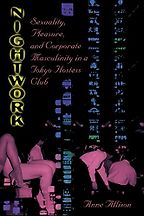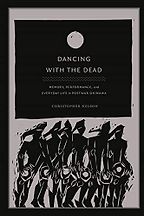Before we get on to your books about Japan, can I ask you a preliminary question? I was born in 1970. So, when I was growing up in the 1980s and started becoming aware of the world, Japan was seen as the model of what every industrial society should be. It seemed to have got everything right. And yet, for most of my adult life it’s hardly grown at all economically. It suffered years of deflation. It’s got this extraordinary demographic, with a falling population. And yet, in those 20-odd years that it’s been having problems, it appears to have remained a remarkably peaceful society in many ways. I think if you’d inflicted that sort of economic hardship on the United Kingdom, where I am, I doubt it would have coped as well. So, first question: is Japan, as a society, in trouble, or is it a success?
That’s a very difficult question. I wouldn’t say it is a disaster, although it might be, or will be in trouble at some point. We hear a lot about the economic recession and the demographic crisis, but whenever I go to Japan—I’m from Tokyo—lots of people are still consuming a lot and I see a lot of small children with their mothers. Indeed, the population of Tokyo is increasing. That idea of a demographic crisis is something that it is hard to feel when you are in the big cities.
It’s similar with the economic downturn. It’s been going on for decades, but Japan is still the World’s third largest economy. I guess we also see the economic situation relatively—people always compare Japan to the high point of its economic boom years in the 1970s or 1980s.
It’s still a very rich and, in many ways, successful country.
But I would say inequality has certainly become more visible—the existence of obvious differences between people who have and those who don’t. And certainly, people’s feelings have changed. Not many people imagine that the future of Japan is going to be brighter and brighter. Pessimism is prevailing, and the feeling that Japan has made some mistakes.
And is that inequality the result of unemployment or is it a result of increasing pay differentials within employment?
The ideal model was to have lifetime employment. Now, not many companies can provide that. So, lots of people are contract workers or in fixed-term positions. The proportion of people living an uncertain life has increased.
“Pessimism is prevailing, and the feeling that Japan has made some mistakes”
But it’s important to remember that this doesn’t mean that before everyone was securely employed and had a stable life. There were always people who were economically marginalised.
What were you hoping to illustrate about Japan in choosing these books?
Choosing just five books was tough because I read a lot of books about Japanese society. But these five books are among those that have remained very memorable. If there’s a common theme, I think it’s that these books give a sense of how people think about the past, present, and future of Japanese society.
Let’s look at them. Your first book is Lovesick Japan: Sex, Marriage, Romance, Law by Mark D. West. It talks about the law in relation to sexual issues.
Yes, the topic itself is interesting, but I also found this very entertaining while being a serious academic book. It’s very enjoyable and some of the examples are very—I shouldn’t say funny, because many of the cases are actually cases where somebody might end up being killed or committing suicide—but fascinating.
What does the book’s author mean by saying Japan is ‘lovesick’? Does he have some criteria by which he measures this malaise and by which he could deem Japanese society no longer to be lovesick if things were to change?
He uses the term ‘lovesick’ not to describe something like teenagers in love, but rather to describe how Japanese judges see Japanese society. He showcases a particular kind of lovesickness in Japan, love being seen as a disruptive emotion or something painful. Even within marital relations, love is expected only in an abstract way, not something that necessarily characterises marriage in real life.
Probably it is hard to change what he calls a ‘lovesick Japanese society’ because those judges make decisions not only to reflect the social realities, but also based on ideas of what society should be.
It talks about marriage and divorce, but it also talks about things like prostitution and pornography as well.
He is interested in how law saturates sexual life, including things like prostitution, not only in terms of what is legal and illegal, but also in relation to whether or not people’s emotions are involved and so on.
Prostitution and pornography are very prevalent in most societies. Do they play a more open or more accepted role in Japanese society than they would, typically, in European society or in the United States? Is there a very different attitude to these things?
Yes, although I think that’s also changing. But there’s still an idea that if you are watching or reading these things in your private life, that is okay, but you have to separate what you do in your private life from what you do in public. Maybe twenty years ago some Japanese businessmen would have read pornographic magazines openly on the train. That would have been considered okay, although not ideal, because he was not at his company and he was not at home, so it was not really seen as sexual harassment, as many people might characterise it now. But we can still observe those pornographic magazines lined up in convenient stores, so that people can see them as they walk by.
Has divorce in Japan followed the same sort of trajectory as the West, in that it was very rare and restricted up until the early 20th century, but then rapidly became very common?
Japan’s divorce rate is around 37%, so significantly lower than in other developed countries, but also there’s an idea that, from the beginning of the marriage, there’s a kind of separation of marital life and love. It’s ideal if you have love in your marital life. But love is not the most essential thing within the marriage. That also means a lack of love does not necessarily mean divorce follows. Absence of love in marital relations is to some extent expected and not a tragedy.
Just to be clear, when you talk about ‘love’, are you talking about the emotional, or are you talking explicitly about sexual love?
Love as emotional and physical intimacy or affection. But West shows that for judges, such love often becomes a disorienting force. Sex and love are not always linked. If emotional love and sex exist outside of marital relations, that can be a problem. Yet, as often featured in the international media, Japanese marriages are seen as kind of sexless and loveless.
Is there any truth in that?
It could be partly true. In Japan the role of sex in married life is often seen as reproductive. People think it’s ideal to have passionate love within marriage, but not having that is not a disaster.
Does the book tell a story about deep-rooted cultural practice in Japan and attitudes to relationships and marriage, or is it talking about a very particular modern phenomenon in Japan?
I think his analysis reveals underlying cultural understandings. While he talks about law and judges, they are part of Japanese society, and judges often use the idea of social belief. Sometimes such beliefs might not be reflected in practice, but reflect what people believe society should be.
Let’s move on to our next Japan book, Nightwork: Sexuality, Pleasure and Corporate Masculinity in a Tokyo Hostess Club by Anne Allison. As I understand it, the author is an anthropologist who went to work in one of these nightclubs in Japan, as a hostess. What does this book tell us about Japanese society?
Her research was conducted in the late 1980s, when she worked in one of the hostess bars in Tokyo, serving drinks to businessmen. The 1980s was still a period of economic growth in Japan. Lots of companies had an entertainment budget to send their male workers to the hostess clubs after work, so the men could build a collective masculinity and come back into the office to work harder the following day.
The first time I read this book was in the early 2000s and it was striking for a couple of reasons. First, it’s a very unusual topic through which to study broader Japanese society. You wouldn’t immediately assume that hostess clubs could tell us something general about Japanese society. Also, coming from Japan, people’s practices were familiar, like businessmen visiting hostess clubs after work, but I was struck by how they reveal more fundamental ideas about people’s perceptions of place and identity in Japan.
“Even within marital relations, love is expected only in an abstract way, not something that necessarily characterises marriage in real life”
But this book was written over 20 years ago and I think things have changed a lot. Because of the economic downturn many companies don’t have the money to budget for this kind of stuff. And the younger generation don’t really want to go drinking after work with their bosses.
So, today, as I read this book, many of these phenomena might sound almost historical, but I feel this book still shows something that people today are struggling against in Japan. Many people—and even the state—are aware that Japanese society needs to change, especially in terms of gender inequalities. But it is so hard to see changes and improvements.
To understand why gender inequality persists in contemporary Japan, I think we have to understand what was happening in the 1970s and 1980s. This book shows what was seen as ideal, and how separation between the masculine and the feminine spheres was promoted and institutionalised. And how the present situation still draws upon the norms and cultures of those periods.
Yes. And, obviously, if you’re going to hostess bars as corporate entertainment, that’s not going to be much fun for your female employees. Presumably, in the 1970s and 1980s corporate life in Japan must have been almost completely male-dominated. Has that changed a lot? Are there far more women getting to the top of Japanese corporate life?
I think it has changed a little bit, but there hasn’t been drastic change. The government has tried to increase the percentage of women in senior positions. But just saying we need more women on the top won’t help. Institutional changes are also necessary.
I used to have to visit Japan on business in the fairly recent past and I certainly didn’t come across many women in senior positions in corporate life—not none, but close to zero. Does this book tell us something more broadly about the attitudes to and the role of women in Japanese society? Or how those attitudes to women and their role in society have changed?
I think it does both to some extent. Certainly the role of women in society has expanded. Now dual income families exceed single income families in which men are the dominant breadwinners. But the underlying ideas that we see in Anne Allison’s book die hard. Those ideas, like the gendered divisions of labour, were not simply imposed upon people by the state, but also seen as ideal. So, I feel that today many women are struggling between two competing ideologies, that they should work, but also that they should be good mothers.
Our next Japan book is Dancing with the Dead: Memory, Performance in Everyday Life in Post-War Okinawa by Christopher T. Nelson. Tell us what this book’s about.
He discusses how people in Okinawa today, in their everyday lives, encounter and overcome their past suffering. He looks at many different things, such as storytellers or Okinawan traditional dance. By looking at those moments when past memories were recalled, Nelson shows that Okinawans are not simply passive victims, but that they creatively engage their memories and work to transform how they live.
I think you should probably tell us a bit about Okinawa and why it’s important in this context.
Okinawa is currently one of the prefectures of Japan. But Okinawa, previously called Ryukyu, was annexed by Japan in 1879, followed by other former Japanese colonial possessions, like Taiwan and Korea. Since then Okinawa has always been ‘subjected’ by mainland Japan and they have had to internalise the idea that they’re ‘behind’ and need to ‘catch up’ with mainland Japan. They have had to adopt Japanese customs and discard their own languages and traditions. I have simplified the history of Okinawa here, but the relationship between Okinawa and mainland Japan has not been equal historically. Okinawa was also one of the only major sites of land battles in Japan during the Pacific War [in World War II], it was the site of much tragedy and suffering.
This was the only place in Japan in World War II that the Americans actually invaded with troops on the ground.
Yes. During the war, Okinawa was sacrificed as a battle ground to protect mainland Japan and, after the war, Okinawa was again sacrificed and occupied by the Allies until 1971. In 1972, Okinawa again became part of Japan, but its poverty rate is the highest in the country and its education level is lower than mainland Japan. They still struggle economically and socially.
There are lots of films and novels about the Battle of Okinawa, but not so many about contemporary Okinawans, how they feel about the past and how they live today.
What does this book tell us about the relationship between modern-day Okinawans and modern-day Japan?
Those living in Okinawa today cannot simply forget the past. They are still suffering. We also see US military bases in Okinawa and the locals who are against them. We also sometimes see incidents between Okinawans and the American military living in Okinawa. For Okinawans the past is not simply something that happened in the past. The suffering continues. Probably for those from mainland Japan, they might have different perceptions of Okinawa. Okinawa is popular with tourists, as it has beautiful beaches and, recently, Okinawan culture and music have become popular in mainland Japan. So, sometimes for mainland Japanese, the Okinawan past is forgotten or overshadowed by its reputation as a tourist destination and that, too, can contribute to Okinawan suffering.
“Those living in Okinawa today cannot simply forget the past. They are still suffering”
The thing I like about this book is, first of all, it’s very beautifully written. And then his descriptions are very detailed, almost like reading a novel. After reading it, I felt as if I just finished watching a movie or something. That was also, I think, the power of this book. It really immerses readers in its stories.
A lot of the people he talks with or tells the stories of are artists of one kind or another—musicians, storytellers, dancers and some academics as well, right?
Yes. He also participated in the Okinawan dance festival for a couple years.
Let’s move on to Jennifer Robertson’s Robo Sapiens Japanicus: Robots, Gender, Family and the Japanese Nation. What does this book tell us about Japan?
I think when people think about Japan today or its future they often associate the country with robots. In a way, that is true. My Japanese parents gave toy robots to my sons for their birthdays! But this book shows some of the ironic, paradoxical consequences of the creation and use of robots in Japan. The robot kind of symbolises the future of Japan, but actually these robots often rely on and reinforce old ideas, with female robots doing domestic work. The vision of a better future with these robots is almost nostalgic.
When you say female robots are doing domestic work, is it common to have robots in domestic situations in Japan these days, doing cleaning work or that kind of thing?
More and more people own, for instance, a vacuuming robot, although they are not in the shape of a person. But that’s the optimistic vision for robots—you know, house cleaning, vacuuming. The idea there is to help women, so they don’t have to spend a lot of time cleaning. It doesn’t mean that, because of the robot, men do more housework. That just helps women by reducing what they do.
What is a female robot?
Robots don’t have to have a gender, robots can be just robots, but Robertson shows that most of the robots are gendered. Those ‘female’ robots mirror what is feminine in Japanese society.
But what makes it female? Is it just given a female name or are we just talking about something that goes around vacuuming the house—doing ‘women’s work’?
Robots don’t have a sex like a human, but with the robot she is discussing in this book, they are given a gender. Physically, female robots are more curved in their constructions, have cute eyes, and male robots are created as more robust. Female robots are used for places where care is important, such as information centres and they can greet and welcome visitors. It exhibits a femininity in its duty of care. It’s not a threat to the visitors!
Is it saying that most robots in Japan, because they’re providing these services of care, are seen as fundamentally feminine?
Even for robots, which can be totally a reflection of fantasy and beyond our imagination, physical construction and their gendered roles mirror those of humans. There are ‘male’ robots, but what is often seen as natural is that female robots do care-related work.
So, the book is telling a story about deep-seated ideas of gender roles within the family in Japanese society?
Yes, in family and in society. The main idea is that the robot is often associated with the idea of the future and liberation from old ideas. But, actually, the robot also relies on and reproduces old ideas about gender and the family.
Let’s move on. Your final book about Japan, which is I think the only one on the list written by a Japanese person, is Junko Kitanaka’s Depression in Japan: Psychiatric Cures for a Society in Distress. In what sense is Japan a society in distress?
This book is about depression in Japan. But also about how the idea of depression has changed historically in Japan. I’ve talked about how some old ideas still endure in Japan today. This book shows how the idea of depression has changed in Japan. When I was younger, people didn’t talk about depression at all. I am pretty sure that there were people with depression, but it was not common or acceptable for them to talk about it.
But today lots of people casually talk about depression and being depressed. Medicines are available and you can really feel that the way Japanese people think about depression has changed. Kitanaka explains how this change was possible.
Why was it possible?
She argues that depression has become not only an individual matter, but rather a social and national matter. Importantly, this change overlaps with the Japanese economic downturn that began in the mid-1990s. So it occurs when the Japan boom years ended, when lots of people lost their jobs or lost their lifetime employment—so they had to work harder without any extra pay. That kind of environment created ‘deaths from overwork.’
So depression was portrayed as the sign of a social disease in Japan. The overlapping idea is that Japan is sick. And individuals have become sick as a result of this broader social malaise, not simply individual traits or weaknesses.
How has the medical or psychiatric profession responded to that in Japan? How is it being treated?
That is another interesting topic in this book. Although it was seen as a social disease, the treatment for it was focused on individuals’ bodies, looking at bodily symptoms. The medical profession doesn’t really talk about the social context, but they often talk about bad headaches or being tired.
“The suicide rate is not particularly high as compared with other developed countries but, sadly, the highest cause of death among young Japanese people is suicide”
And then, the best solution for this kind of depression is seen as rest—just rest for a week or two, and then you can go back to work again. It’s a sort of biological reductionism. They talk about it largely in terms of how your body feels.
Has Japan become very keen on treating depression with drugs, like in the United States, or is that something that hasn’t taken off in Japan?
Maybe not as much as the US, but it’s certainly increasing. Kitanaka also shows that this increasing medicalisation is because of the ways psychiatrists destigmatised depression and framed it as a biological dysfunction. So, depression was no longer seen as an individual genetic problem. It was also called a ‘cold of the heart’, so it was like other physical illnesses—the heart had caught a cold. In Japan, the body and the mind are often seen as a unity. So, treating the bodies was thought as ultimately treating the mind.
This book is obviously interested in the link between personal depression and societal problems in Japan. Has there been any public discussion in Japan, or even projects or policies at the political level to try and improve this situation?
Yes, that is also discussed in the book. There was a historic Supreme Court case in the mid-1990s, in which it was established that suicide could be attributed to social causes. An employee of the company, Dentsu, committed suicide due to his depression and being overworked. Since then, the government installed some stress-check inspections within companies to prevent suicides and deaths from overwork
Is that particularly high in Japan relative to other developed countries?
The suicide rate is not particularly high as compared with other developed countries, but sadly, the highest cause of death among young Japanese people is suicide. Also, as this book shows, suicide was often seen as the last resort for people to express their own will in Japan. So, suicide itself was not always stigmatised, sometimes even romanticised, like Samurai cutting their bellies open. There was a social attitude that if someone commits suicide, others just leave them alone and leave them with their dignity. But now, since the court case, people have also came to recognise that suicide can be caused by mental illness, and is thus not an expression of will.
Just before we leave, what is your own academic work focused on? And are you publishing anything in the near future?
Yes. Actually, my first book is coming out in July. It’s about transnational matchmaking practices between Japanese men and Chinese women. These are commercially brokered marriages. They are introduced through an agency and pay money to meet for around 20 minutes, then they decide whether or not to get married.
Why are Japanese men looking for Chinese brides—and why are Chinese women looking for Japanese husbands?
That is probably the most frequent question I get. The simple answer is that Japanese men want to marry but can’t find a bride in Japan. And they often look for much younger women. They think Chinese women are almost like Japanese women, maybe they can pass as Japanese women. For the Chinese women, often they are seen as too old to marry in China, even if they are only in their late twenties. Some of them want to go to Japan to earn money. That is what people in their local communities always talk about. So economic inequalities between these Japanese men and Chinese women are a crucial background condition making these matchings possible. But, of course, no one wants to believe or say they are marrying for money or with money.
Obviously the colonial history with Japan and China was painful. Are these marriages disapproved of in China or Japan? What conclusions have you drawn from your work?
The Chinese women are mainly from the area that constituted the former Japanese colonial project in Manchuria. So, they are very aware of Japan’s colonisation and very critical of Japanese imperialism. But at the same time, there were a lot of Japanese war orphans left behind in northeast China after the war. Those Japanese war orphans were raised by local Chinese families. Many people told me about these blood relations between Japan and China. Then, since the resumption of diplomatic ties between Japan and China, many people in those communities migrated to Japan.
So people emigrated from China in the boom years?
Yes, it started in the 1980s. First, it was those who were officially recognised as Japanese war orphans by the Japanese government and their Chinese families, those who married the war orphans. Then came other people from those communities who had heard that they can earn a lot of money in Japan, which was, to some extent, true during Japan’s economic boom years. Much later, especially for Chinese women, marriage came to be seen as another way to go to Japan.
And are these marriages successful?
Well, that’s an interesting question. I don’t have an exact figure, but around 50% of the marriages I looked at survive. That’s almost the same as the US, even though they don’t speak the same language and they marry almost as strangers!
Five Books aims to keep its book recommendations and interviews up to date. If you are the interviewee and would like to update your choice of books (or even just what you say about them) please email us at [email protected]
Five Books interviews are expensive to produce. If you've enjoyed this interview, please support us by donating a small amount.












